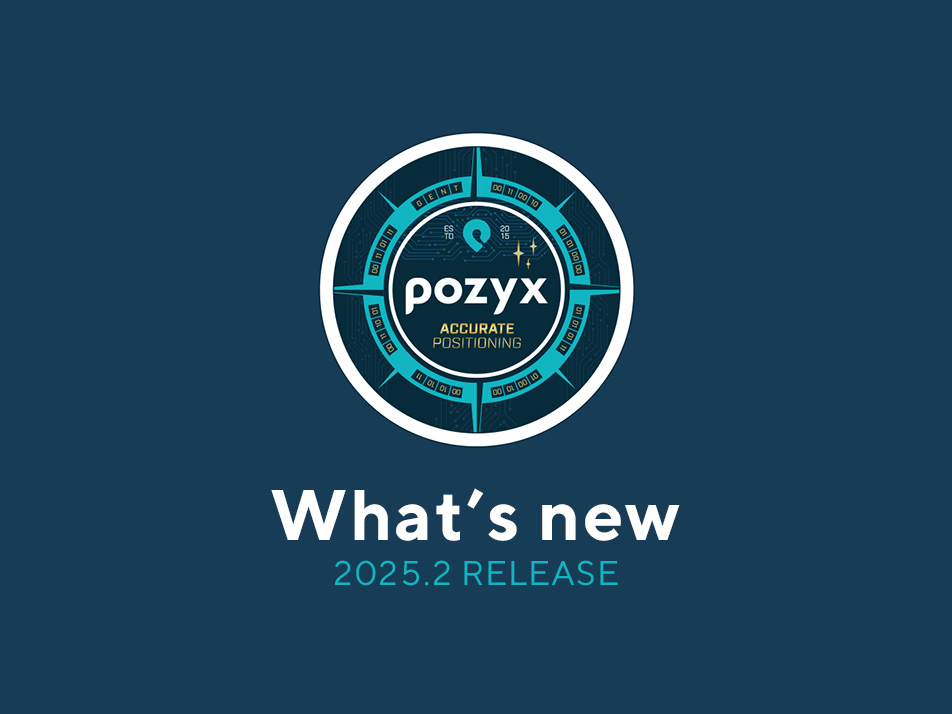The Power of Daisy Chaining - Efficient installation and cost savings in RTLS
RTLS solutions and asset tracking are essential for increasing productivity and reducing waste in the manufacturing industry. To ensure efficient operations and prompt product delivery, manufacturers must have real-time visibility into the movement of goods throughout the production process. Pozyx provides RTLS anchors as infrastructure and tags to track moving assets. The unique daisy chaining feature for the anchor connectivity outperforms the conventional star topology method and is redefining the efficiency and cost of RTLS infrastructure installation.
As an installation partner with extensive experience in networking and cabling, I have had the opportunity to work with Pozyx and their innovative RTLS solution. One of the standout features that has made our installations smoother and more cost-effective is its daisy chaining feature for anchor installation, which is not offered by other RTLS-vendors that use the concept of star topology instead.
With the daisy chaining feature, our team was able to save our customers 60% on cabling and installation costs, while significantly reducing the overall installation project time by 55%. This has made our life as an installation partner much easier, and the end customer is thrilled with the reduction in cost, labor and effort achieved through this important feature.
I am excited to continue working with Pozyx to deliver innovative solutions that meet the needs of our clients and help them maintain their competitive edge in the industry. I highly recommend Pozyx for their advanced technology and commitment to delivering value-added solutions for logistics and manufacturing use cases.
Pieter Becue, Manager BQnet
Efficient daisy chain setup
One of the main benefits of Pozyx's daisy chaining feature is its capacity to build a scalable and adaptable network of Pozyx anchors in a daisy chain configuration. In this setting, the anchors are connected in a series, allowing them to communicate with each other and relay the positioning information to a central hub. This eliminates complex star topology, where each anchor would need to be connected directly to the central hub, resulting in cumbersome cabling and installation requirements.

1. Greater flexibility
Firstly, it provides greater flexibility in terms of anchor placement, as the anchors can be installed in a linear or branching configuration, depending on the layout of the production facility. This allows for more adaptable and scalable positioning coverage, without the need for additional cabling or infrastructure changes.
2. Easier installation and maintenance
Secondly, the daisy chaining solution enables easier installation and maintenance. With the traditional star topology, each anchor would require a direct connection to the central hub, resulting in complex cabling and increased installation time. In contrast, the daisy chaining feature simplifies the installation process, as the anchors only need to be connected to the neighboring anchors in the daisy chain, reducing cabling and installation requirements.
Blijf op de hoogte!
Blijf op de hoogte via de Pozyx e-mail nieuwsbrief. Leer van experts uit de sector. Ontvang meldingen over productupdates, tips en exclusieve aanbiedingen voor abonnees. Ontvang uitnodigingen voor evenementen en gratis toegangskaarten. Lees als eerste onze artikelen en blogs. Mis het niet! Geen spam, beloofd!
Ja, meld me aan
3. Enhanced reliability and resilience
Thirdly, the daisy chaining solution offers improved reliability and robustness. With daisy chaining, each anchor acts as a repeater, which means that the signal is amplified and strengthened as it passes through each anchor. This improves the reliability and stability of the network. If there is an anchor failure, besides the PoE and signal repeater, the anchors further down the chain will still be active. This provides a more resilient and reliable system that is less prone to single point of failure.
4. Time and cost saving
Finally, the daisy chaining feature has a major impact on cabling and installation costs and time. By using daisy chaining instead of a traditional star topology, organizations can save up to 60% on cabling and installation costs of the RTLS. In addition, this approach significantly streamlines the overall installation process, reducing project time by as much as 60%. This improvement in efficiency not only makes the deployment of indoor positioning systems more cost-effective, but also simplifies the entire installation process for all parties involved. Consequently, the daisy chaining solution continues to gain ground as an essential element for optimizing resources and improving the overall efficiency of indoor positioning systems.
Conclusion
In short, Pozyx's daisy chaining feature revolutionizes work-in-progress tracking and indoor positioning systems. With its greater flexibility, easier installation, greater reliability, and significant time and cost savings, it surpasses traditional star topology. As daisy chaining becomes more prevalent, it will become an indispensable tool for optimizing resources and streamlining production processes in manufacturing.











